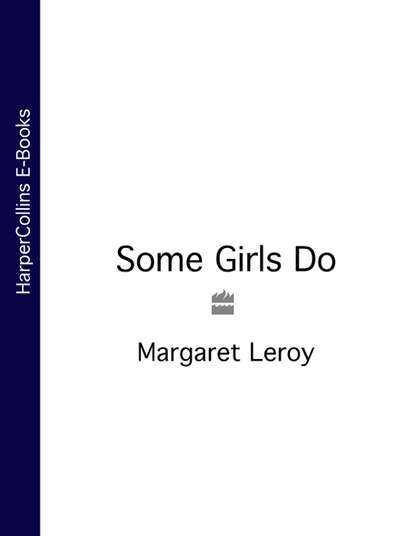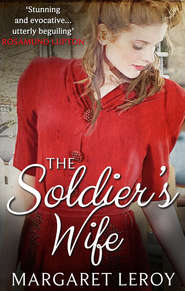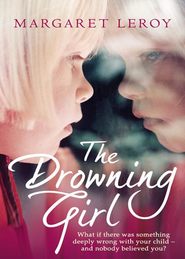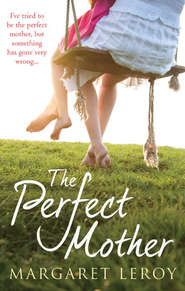По всем вопросам обращайтесь на: info@litportal.ru
(©) 2003-2025.
✖
Some Girls Do
Автор
Год написания книги
2018
Настройки чтения
Размер шрифта
Высота строк
Поля
FAT FUNNY WOMEN: Come up sometime and see me
In the most celebrated come-on in cinematic history, Mae West, well past forty, all huge round shoulders, cleavage and diamonds, approaches a young and impassive Cary Grant, whom she believes to be a Salvation Army officer. ‘I always did like a man in a uniform, and that one fits you grand. Why don’t you come up sometime and see me? I’m home every evening.’
Mae West does all the male things. She looks with lust, she expresses approval of what she sees, she makes the arrangements. She defines what happens; she even does it in a typically male form of humour – in the celebrated one-liners that she wrote herself and that invariably express sexual appetite: ‘It’s better to be looked over than to be overlooked’, or ‘When I’m good I’m very very good, but when I’m bad I’m better.’
Angela Carter has suggested that Mae West’s sexuality could only be tolerated on the screen because she didn’t become a star until she’d reached virtually menopausal age. ‘This allowed her some of the anarchic freedom of the female impersonator, pantomime dame, who is licensed to make sexual innuendos because his masculinity renders them a form of male aggression upon the woman he impersonates … She made of her own predatoriness a joke that concealed its power, while simultaneously exploiting it.’
(#litres_trial_promo)
Mae West is larger than life. And her successors today are the fat funny women like Dawn French, Jo Brand and Vanessa Feltz, who also make a joke of their libidinousness while simultaneously exploiting it. Dawn French tells us that fat is sexy; Jo Brand jokes about tampons and oral sex; Vanessa Feltz writes salacious articles for She, and a tape of her writings is called What are these strawberries doing on my nipples? All three project a public persona that is explicitly about sexual appetite.
Why should big women, at least in their public and comic personas, be free to express sexual interest directly? There’s the obvious equation between appetite for food and appetite for sex – but are there deeper or more subtle explanations?
Fat has certain culture-specific qualities. Today we see female fat as unappealing, but in this we’re quite different from most other cultures. In some African societies, women are fattened up for marriage. In the Finnish saga, The Kalevala, a girl is urged by her mother to eat up to make herself beautiful:
One year eat melted butter:you’ll grow plumper than others; the next year eat pork:you’ll grow sleeker than others; a third year eat cream pancakes:you’ll grow fairer than others … .
(#litres_trial_promo)
Fat women are, in fact, physiologically more feminine than thin women, because they have higher levels of female hormones. But paradoxically, because of the public preference for thin women, we see fat as a denial of certain female qualities. Femininity is about reducing yourself; fat is about substance and taking up space, about a kind of power – which may be seen as male. And to be fat is to have permission to do masculine things. Conventional beauty imposes restrictions and implies a behaviour code: girls learn this at adolescence – drop your eyes, keep your knees together, don’t be too available. But fat may confer the kind of licence that postmenopausal women have in some societies – like Bali, where Margaret Mead found that women of child-bearing age were expected to behave modestly, but older women could use obscene language as freely as any man.
(#litres_trial_promo)
A need for initiative also results from the common perception of fat women as unattractive. More men are turned on by female fat than would publicly own up to it, given fat’s extreme unfashionability. But that is never acknowledged, and in their public personas these women aren’t there to be looked at. They have to express their sexuality through what they do – or what they say they do – rather than through what they look like. They have to bypass the normal mechanisms. Fat puts you outside the sexual game. The fat woman can’t wait for the man to come on to her; she has to go and get what she wants for herself.
The fat funny woman is quite different from the women we’ve considered so far – the women with ulterior motives; the bad women, the predators, the prostitutes. The fat funny woman has her own sexual pleasure – and that alone – in mind. She introduces another principle of female initiating.
Imagine the most orthodox paradigm of a sexual relationship. A heterosexual couple: she’s young and pretty; he’s a little older, taller, richer and higher status than her; they’re entering into a sexual relationship with a view to marriage and reproduction. That’s the stereotype. And the further we move away from that stereotypical coupling, the more likely we are to find female initiatives. The fat woman doesn’t fit the stereotype because of her unconventional appearance. And whenever women are unconventional in other ways – perhaps in their ages, perhaps in their sexual objectives – they also become more likely to make the first move.
OLDER WOMEN: Here’s to you, Mrs Robinson
The Graduate was made in 1967. It tells the story of the seduction of naive Benjamin by his family’s forty-year-old neighbour, Mrs Robinson. The affair comes to an end when Benjamin falls in love with Mrs Robinson’s daughter, Elaine.
Mrs Robinson takes every initiative. She makes the suggestions, touches first, sends him off to book the hotel room, takes off her own clothes. In other ways, too, she behaves like a stereotypical man: she’s the one who just wants sex and doesn’t want to talk.
The gender dynamics of the film haven’t worn nearly as well as the Simon and Garfunkel soundtrack. Today, in a social climate in which women consider themselves attractive well into their forties and fifties, we like Mrs Robinson a great deal more than once we did. Her brittle sexuality fascinates, and there’s something sad about her transformation from feisty seducer into vindictive old hag. By contrast, Benjamin’s relationship with Elaine seems pallid and asexual, though we’re clearly meant to approve of it.
But even though it all looks very different from the way it looked when it was made, The Graduate remains an intriguing film. In spite of the two decades of sexual liberation that have elapsed since it first came out, it’s still one of the most striking examples of female sexual initiating on celluloid. Compared to Mrs Robinson, Alex in Fatal Attraction is quite the Girl Guide – at least until she starts going crazy.
Here is another kind of woman who initiates – in our stories, and in reality: the woman who initiates sex with a much younger man. This pairing is another illustration of the principle that women are more likely to make the first move in unconventional relationships. Usually she does it to please the man. One model is the golden-hearted whore who gives a young man his first sexual experience: like the woman with armpits that smell of smoke who seduces José Arcadio in One Hundred Years of Solitude: ‘She had lost the strength of her thighs, the firmness of her breasts, her habit of tenderness, but she kept the madness of her heart intact.’
(#litres_trial_promo) Mrs Robinson, though, isn’t in the least like this. What was once shocking and is now interesting about her is that her motives aren’t remotely pedagogic. She does it all for her own pleasure.
Because of this clash between the two versions of the seductive older woman – the warm altruistic sexual teacher, and the hard self-seeking aging seductress – when we come across cases of women having sex with boys, we don’t know what to think. Child protection workers struggle to know how to respond to accounts of sexual contact between older women and under-age boys. Such cases give rise to heated debate. What frame of reference to use? Is it abuse – or love and mutual pleasure?
A male social worker told me, ‘This lad was about thirteen, and the woman was around thirty. There was a lot of hinting and denying but nothing that amounted to a disclosure – but it was clear as daylight what was going on. My colleague was keen to see it as abuse – and was arguing by analogy that you should treat it as though it was a man with a thirteen-year-old girl. I felt intellectually that the argument had some force, but I couldn’t get worked up about it. There was no issue that he was being coerced into it. There was a very inconclusive child protection conference and it was registered as “grave concern” rather than abuse.’ But the older man who has sex with an under-age girl will always be seen as an abuser.
From time to time, cases of female teachers having sex with pupils hit the headlines. There’s confusion in our reaction to these news stories. We don’t know how to judge what has happened.
Jane Watts at forty-two had sex with a thirteen-year-old pupil whom she’d first met when she was his teacher at primary school. The newspaper reports when the case came to court in 1994 used a language of relationship: she ‘seduced’ him.
(#litres_trial_promo) They’d have used a quite different language if it had been a forty-two-year-old male teacher and a thirteen-year-old girl.
Tina, one of the women I interviewed, had a story like this to tell. As a young teacher, she’d been strongly attracted to a sixteen-year-old boy in her class. ‘I wormed and wheedled and went out of my way to be near him and with him,’ she said, ‘and I asked him out and I took him out. He was desperately shy. I finally got him out, I thought, God, I’ve put this boy in a situation that he doesn’t really want to be in for the time being – so I kind of left it – there was no need to be in contact because I was causing the contact – and then I used to get messages from his sister saying, “Oh, Kyle said, give him a ring for a game of tennis if you ever feel like it.” But I never did – I moved on to someone else and the excitement had faded into the past.’
Is she a loving teacher or a scheming seductress? She doesn’t know what to think of herself. She’s in love and wants to be with him: she worries he’ll feel abused. Kyle, too, is ambivalent. He seems shy and out of his depth. But then he sends messages hinting he might still be interested.
This theme of older women initiating with younger men will crop up again and again in this book. In our stories, older women do sometimes seduce younger men – but not very often because as a culture we don’t have much interest in older women as subjects of fiction. In the real world, though, being older than the man she wants is the kind of unconventionality that most frequently encourages a woman to make the first move.
Tina decided not to pursue the relationship with Kyle, but is now living with a man twelve years younger than her, a relationship she initiated.
LITTLE GIRLS: I got sommat to show you
One of the most delectable female initiators is a little girl. ‘She was yellow and dusty with buttercups and seemed to be purring in the gloom; her hair was as rich as a wild bee’s nest and her eyes were full of stings …’
(#litres_trial_promo) This is Rosie Burdock, who gives her name to Laurie Lee’s autobiography Cider with Rosie, first published in 1959, and celebrated for its explicitness about childhood sexuality.
Rosie is a girl around puberty, her age unspecified – ten or eleven, perhaps, to the narrator’s thirteen. In this encounter, he has the female role. She’s the one who plots and plans, asks, persists, tells him how he feels, makes it happen; he’s the one who says no when he means yes, acquiesces in her schemes, is swept away, has a sexual awakening.
‘I got sommat to show you.’
‘You push off,’ I said.
I felt dry and dripping, icy hot. Her eyes glinted, and I stood rooted.
‘You thirsty?’ she said.
‘I ain’t, so there.’
‘You be,’ she said. ‘C’mon.’
She takes him to the secret place she’s found under the waggon, gets him drunk on cider, and makes her move. ‘Then Rosie, with a remorseless strength, pulled me down from my tottering perch, pulled me down, down into her wide green smile and the deep subaqueous grass.’
(#litres_trial_promo)
Many of us have vivid memories of childhood sex play with other children of our own age. Perhaps we undressed and looked, or shared a self-stimulation technique involving blankets or rope-climbing we’d just discovered, or played Doctors and Nurses, or did ‘what grown ups do’. Sometimes there was a sexual thrill, sometimes it was purely play – and it wasn’t abusive, because there was no bullying or power imbalance. And girls suggest and start off these activities just as often as boys; girls also think up sexual games, explore, express curiosity, look and show.
This kind of initiating female behaviour fades at puberty – or perhaps becomes channelled into transient lesbian expression, in that mutual caressing of breasts with a best friend that many women who now feel thoroughly heterosexual recall from adolescence. Rosie probably wouldn’t have made such audacious moves with a lad she fancied a year or two later. With sexual maturity, the adult rules about male/female relationships assert themselves and, while they’re learning how they’re expected to behave, girls tend to be especially traditional – hence the rigidity of the double standard for girls in their early teens. Once the potential is there for conventional heterosexual pairings between almost sexually mature teenagers, girls act by the rules: no more wide green smiles and deep subaqueous grass.
Unless the object of a girl’s affections is a musician in her favourite band – in which case those rules may be flagrantly disregarded. Groupie behaviour can be seen as an extreme form of childhood sex play. The feeling itself may be deeply serious – a girl with a crush, just like a mature adult in the throes of sexual obsession, will think about almost nothing else – but there’s no hope of a response. The best that the boldest and most persistent rock chick could hope for is a one-night stand and a chance to steal his cigarette lighter to show off to her friends. This is a sexual behaviour that’s ‘outside’: it’s not about pair-bonding. And in this context a girl or woman may play extravagantly, taking outrageous initiatives – sending him her knickers, insinuating herself past the security men and hiding under his bed, or like ‘Cynthia Plastercaster’, making intimate casts of her favourite rock stars as a lasting memento of her passions.
PERVERSE WOMEN: I really fancy you and Josh
The older woman and the little girl are unconventional subjects for sexual stories because we don’t think of them as having any sexuality. But women who fit the classic sex object mould may also initiate if they want an unusual kind of sex.
The most baroque perversity in our stories is sex with animals – a kind of copulation that’s necessarily sterile, or in the wilder reaches of the imagination gives birth to monsters – and that can be read as a quest for extreme sexual experience. Titania wakes on her flowery bank to fall in love with Bottom in his donkey’s head. In Greek myth Pasiphaë conceives a passion for Poseidon’s white bull and hides herself in a carving of a beautiful cow in order to be penetrated by him. Catherine the Great, the nymphomaniac Russian empress, was rumoured to have died while attempting to have sex with a horse.
These women all initiate. In real life, too, where women have perverse sexual purposes, they’re more likely to make the first move.









